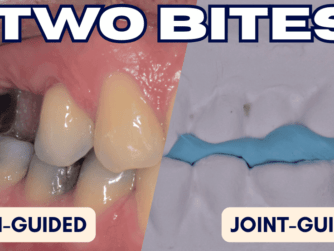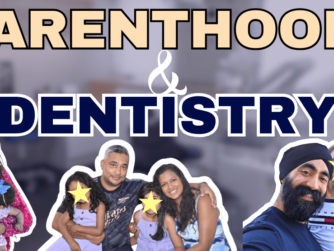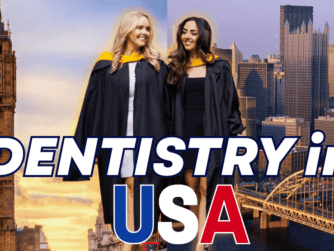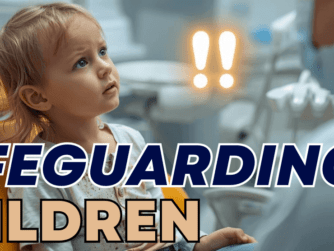Podcast: Play in new window | Download (Duration: 10:18 — 16.6MB)
I want to talk about maximising your learning potential from all the courses that you attend, but particularly the online ones.
I was inspired from listening to a book called Limitless by Jim Kwik (check it out if you’re in to maximising your potential and the human mind). It had so many gems in there which I thought would be so useful for Dentists to learn when we’re attending courses so they have more impact on us.
More importantly, now that with COVID-19, a lot of the education is going online. You now commonly hear the phrase “I’m webinared out” – we are attending too many webinars and are itching for in-person courses again.
Over lockdown it was definitely the case, you could fill your whole day with webinars during lockdown. That just gave us digital fatigue.
I want to refresh and recap on what are the ways that you can maximise your learning while you’re on dental courses, but particularly on the online courses, so you don’t feel “webinared out” or “digital fatigue”.
We can apply this to any online education – in fact, as a Dentist you probably already subscribe to membership only platforms for dental education. However, like many of us in our busy lives, you may be guilty of not giving these platforms enough time to gain from them.
It is so important to make time to actually watch that content and actually immerse yourself in that content. I like to call this ‘protected time’.
Time is scarce. This is why when you do find time to watch these videos on the online platforms or actually attend these webinars, your time is so valuable. You really have to maximise what you gain for every single course that you do, and every single video that you watch, and every minute that you invest in them.
This is why I want to share the FAST protocol to maximise your learning, inspired by Jim Kwik and Limitless.
F = Forget
A = Action
S = State
T = Teach
F stands for forget, which sounds crazy. Let’s imagine you’re doing a course on veneers – maybe a webinar or an online course on veneers. The way to maximise how much you learn from that particular course is to forget everything you know about veneers. One of my favourite quotes is from someone called Malcolm Forbes, and it’s “the role of education is to replace an empty mind with an open one”.
The A stands for action, and it can also be interpreted as active learning. For me, it’s definitely the case that I learn better when I’m taking notes. One thing that Jim Kwik teaches is that we do not learn from consuming. We learn from creating. When I’m creating notes, or when I’m creating mind maps, and some people like typing manually on their iPads or on their laptops, basically almost transcribing what the lecturer is saying… you gain so much more from that process! So note taking or whatever you need to do (whatever creative way that you learn), it’s so important to have that rather than just consuming blindly or consuming blankly, you need to be able to create and that way you will learn more.
The other thing that comes with active learning is that multitasking is an absolute myth. We can’t multitask effectively. For example, have you ever been on a course and maybe you’re sat in the front row with all good intentions…but what happens is that you get a text message from your practice manager or patient emails you and now your attention is completely somewhere else. And now you’re dealing with a staffing issue or a patient issue. Of course then you leave the the course to make a phone call. You’re now dealing with the patient or the staffing issue. You’re absent from the course. It’s basically that you’re trying to juggle a few things at the same time, and it’s just not going to work. You’re not going to maximise your learning potential.
You have to focus intensely on that course in front of you and forget everything else. Forget the distractions. As humans, we can’t process a negative. Because we can’t process a negative, if something pops up in your mind or you get an email. You can’t just be like “okay, I’m not gonna think about this..”. The best way to handle that situation is make a note of it somewhere or make a to do list, focusing on that task at hand, and then move on from it.
The S is super important for all realms, but particularly online. And the S stands for state. That means your environment, your emotional state, and also physical state (what is your posture like as you read this?). Are you doing an online course or webinar, in your PJs, lying down in bed, sideways? It’s not going to make sense compared to working in a home-office, far away from the kids (as far as you can be!). Your posture is important. If you’re slouching on the laptop, your physiology has an effect on your mind.
How about your emotional state? The courses where I have learned the most from have been the ones where I’ve been really excited. So I remember when I saw Jason Smithson’s 2-day course about onlays and veneers – I was so excited about that. I was also really excited for Michael Melker’s course in Stockholm. It is therefore no surprise that those two courses had a massive impact on me in terms of how much I took away.
Jim Kwik says that your ability to retain information long term is governed by a formula:
Longterm Information Retention = Knowledge x Emotion.
The knowledge that you gain that day is multiplied by your emotional state. If you’re actually excited to be somewhere and genuinely excited to learn that content, then you will learn so much more.
You must tap into your mind and create a sense of excitement and eagerness and be keen and you will learn so much more, you will retain that information, because of your emotional state is being multiplied by that knowledge for better retention.
The last part of the FAST protocol is T, which stands for teach. Now, what I don’t mean is you do one online course or webinar and suddenly you start running your own bespoke courses! That’s not what I mean at all. What I mean is that if you attend a course, or an online course, with the intention of passing on that knowledge that you learned to a colleague, then you will learn so much more because “when you teach, you get to learn it twice”. I’m a firm believer that the best students make the best teachers and vice versa. I think when you when you’re able to teach something and pass on information that you’ve gained from a lecturer on to someone else, or apply it to a clinical case, that will really amplify your learning.
So there we have it, some things to consider about how to maximise your learning from attending courses using the FAST protocol.
Forget what you know already. Be active, be in the correct state. That’s your environment, that’s your emotional state. Consider teaching someone something you learn because that way you get to learn it twice.
If you found this useful, please do share it with a colleague!
If you enjoyed this episode, you will also like How to Win at Life and Succeed in Dentistry.







